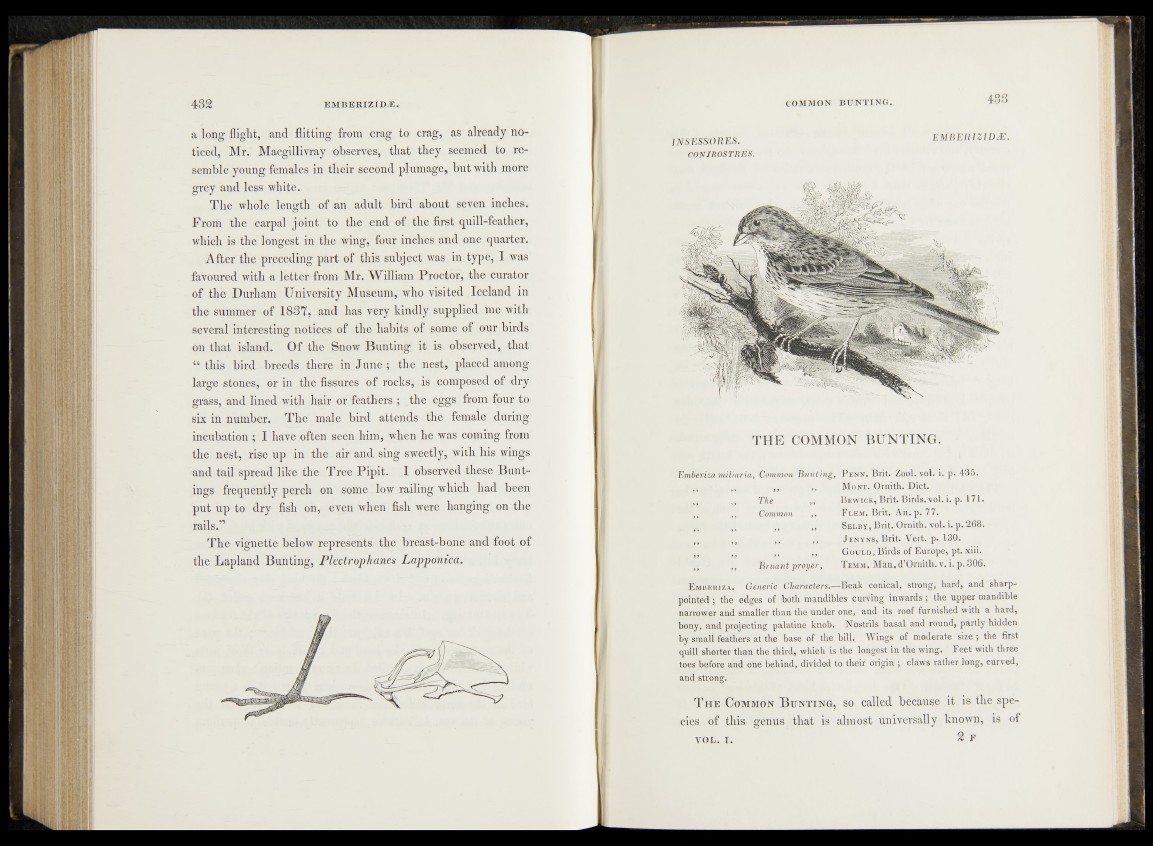
a long flight, and flitting from crag to crag, as already noticed,
Mr. Macgillivray observes, that they seemed to resemble
young females in their second plumage, but with more
grey and less white.
The whole length of an adult bird about seven inches.
From the carpal joint to the end of the first quill-feather,
which is the longest in the wing, four inches and one quarter.
After the preceding part of this subject was in type, I was
favoured with a letter from Mr. William Proctor, the curator
of the Durham University Museum, who visited Iceland in
the summer of 1837, and has very kindly supplied me with
several interesting notices of the habits of some of our birds
on that island. Of the Snow Bunting it is observed, that
“ this bird breeds there in June ; the nest, placed among
large stones, or in the fissures of rocks, is composed of dry
grass, and lined with hair or feathers ; the eggs from four to
six in number. The male bird attends the female during
incubation ; I have often seen him, when he was coming from
the nest, rise up in the air and sing sweetly, with his wings
and tail spread like the Tree Pipit. I observed these Buntings
frequently perch on some low railing which had been
put up to dry fish on, even when fish were hanging on the
rails.”
The vignette below represents the breast-bone and foot of
the Lapland Bunting, Plectrophanes Lapponica.
INSESSQRES.
CONIROSTRES.
EM B E B IZ ID E .
TH E COMMON BUNTING.
Emberiza miliaria, Common Bunting, P enn. Brit. Zool. vol. i. p. 435.
It ,, ,, Mont. Ornith. Diet.
The ,, Bewick, B rit Birds, vol. i. p. 171.
H p Common ,, Flem. Brit. An. p. 77.
M ,, Selby, Brit. Ornith. vol. i. p. 268.
1( ,, ,, ,, J enyns, Brit. Vert. p. 130.
,, ,, Gould, Birds of Europe, pt. xiii.
>t ,, Bruant proyer, Temm. Man. d’Ornitlu v. i. p. 306.
Emberiza. Generic Characters.—Beak conical, strong, hard, and sharp-
pointed ; the edges of both mandibles curving inwards ; the upper mandible
narrower and smaller than the under one, and its roof furnished with a hard,
bony, and projecting palatine knob. Nostrils basal and round, partly hidden
by small feathers at the base of the bill. Wings of moderate size ; the first
quill shorter than the third, which is the longest in the wing. Feet with three
toes before and one behind, divided to their origin ; claws rather long, curved,
and strong.
T he Common B unting, so called because it is the species
of this genus that is almost universally known, is of
V O L . I . 2 F